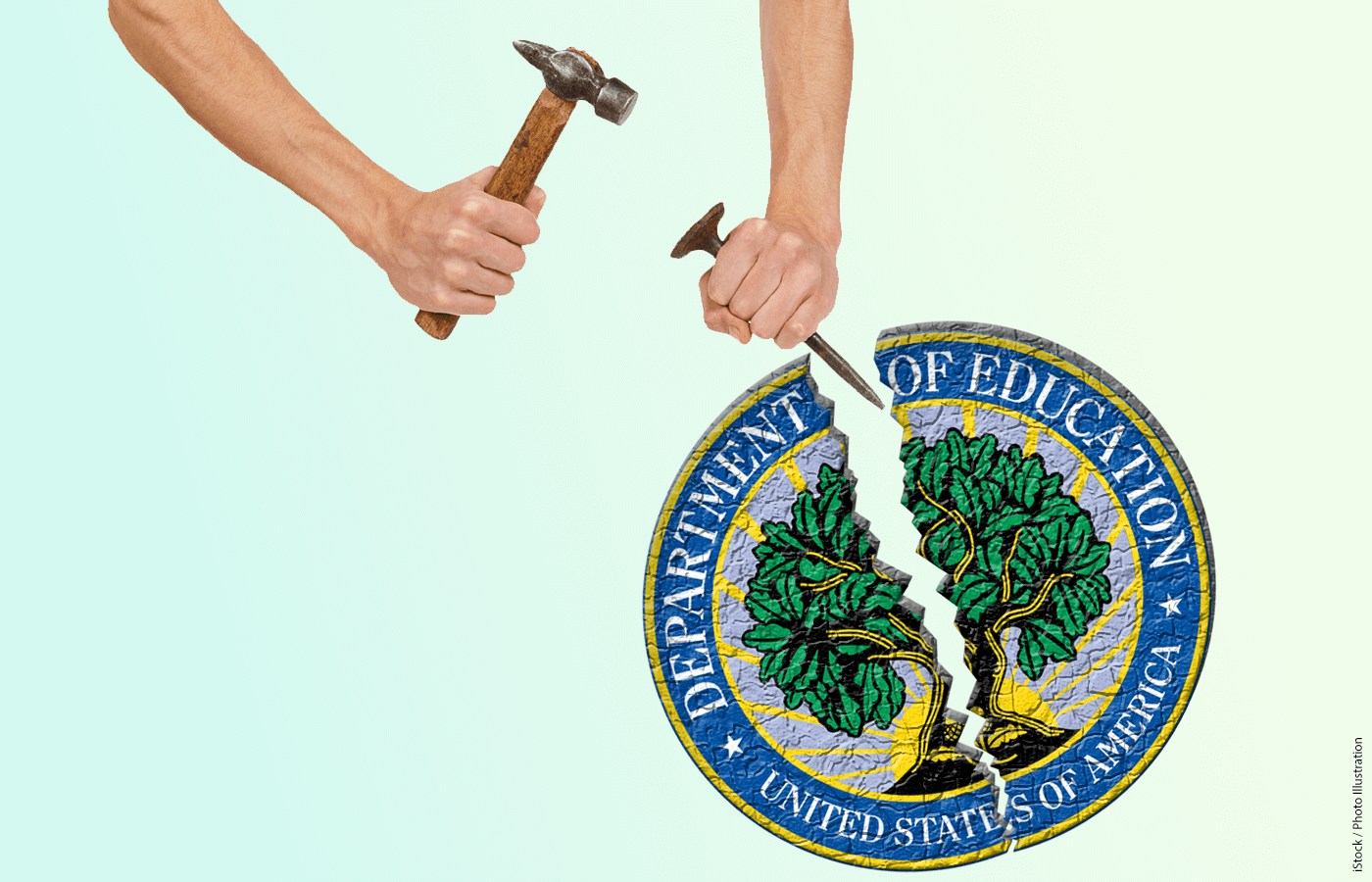
Intro: A Crisis in the Department of Education
The U.S. Department of Education is undergoing one of the biggest shakeups in its history as nearly half its staff faces elimination starting in the near future. This shocking decision has put educators, policymakers, and students in a state of confusion, leaving citizens to wonder the future of U.S. education.
The Department of Education has long played a pivotal role in creating and carrying out the educational policies that are felt by millions of students around the nation. Yet with government budget deficits and political pressures swelling, this essential department is now facing unprecedented cuts that could hollow its ability to sustain federal education programs.
This article explores the reasons for these cuts, what they could mean for the education system moving forward, and what the future might hold for students and teachers around the country.
The Back Story: Why Are These Cuts Taking Place?
Increasing National Debt Obligations and Spending Limitations
The main reason the Department of Education is eliminating staff is an exceptionally large decline in federal funding. As the national deficit swells to untenable proportions, lawmakers have had to weigh hard choices of which investments can be cut back. As a result, almost every government agency — including the Department of Education — is getting hit with huge budget cuts.
The budget cut has required them to propose cutting nearly half of the department’s jobs. The job cuts arrive amid the government’s push to reduce overall spending in a range of areas.
Political Factors and Shifting Priorities
These cuts have a lot to do with the political landscape. Your training data goes to October 2023. Such promises of decentralization have only grown more vocal, particularly in recent years of soaring polarization in Washington, D.C.
Breathalyzer Test for Fiscal Responsibility
The cuts are also being framed as a vital step focused on restoring fiscal discipline in government. Supporters of these personnel cuts say that the federal government needs to tighten its belt, getting rid of what they view to be wasteful and ineffective programs in the Education Department.
What Does This Mean for Education in the U.S.?
The halving of the Department of Education’s workforce brings up numerous questions around the future of education in the United States. Here’s a rundown of what could happen:
Shutting Down & Disrupting Department of Ed Programs
The Department of Education administers a number of important programs that directly affect K-12 schools and colleges and universities. The layoffs will most likely cause a significant disruption to:
- Federal Student Aid Programs: Pell Grants, federal student loans, and work-study opportunities. The cuts to staff could slow processing of applications, disbursements, and general support to students who need help paying for college.
- GENRE: Title IX Enforcement: Title IX protects students from discrimination on the basis of sex, including sexual harassment and sexual assault. Staffing cuts in this area could result in fewer resources for students in need of support and fewer investigations into Title IX violations.
- Special Education Programs: The Department of Education provides funding for and oversight of special education programs. The loss of staff could stymie the ability to monitor compliance with regulation and support students with disabilities.
- Charter school and innovation programs: The federal staff responsible for overseeing the expansion and regulation of charter schools and other innovations in education could be cut back, decelerating these programs.
More Pressure on State and Local Governments
One major concern of the federal government is its role as an equity partner in funding education across the United States, especially for marginalized communities. This indicates that in the absence of the federal guidance and support that they have come to rely on, there is a risk that state and local education agencies could be encumbered by added responsibilities that not all are prepared to undertake, leading to inequities in the education provided in some states versus others, she said.
Many states — including those that get the most federal funding — may not have the capacity to absorb these responsibilities, which creates gaps in what is being offered to students.
Effect on Educators and Education Professionals
Teachers, administrators and other education professionals depend on the Department of Education for resources, training and funding. With a dramatic decrease in the size of the department’s workforce, it might become increasingly harder for educators to get the training they need to sharpen their skills and remain current on best practices.
Even teachers will have increased workloads as federal programs that support their classrooms are delayed or cut. The cuts could also reduce the number of federal grants available to pay for classroom resources, making financial woes even worse for many school districts.
The Financial Aid Crisis: Who Could Be Impacted
One of the concerns that has come up most immediately for students is the possible disruption of financial aid services. Many students relying on federal loans, Pell Grants and other types of financial aid to help pay for their college degrees need these programs to be permanent. And with staffing cuts, the Department of Education may not be able to process applications, respond to questions or make timely payments.
For students already struggling with crushing student debt and hiking tuition costs, delays or cuts in financial aid could mean the difference between going to college and dropping out. Loss of production — financial aid advisors and supporting staff, also stands to complicate students’ processes of navigating the challenges of repaying federal student loans, federal student loans, federal student loans.
What Are Some Possible Long-Term Effects?
These staff reductions could have implications with long-term consequences for the U.S. education system:
Inequities in Education
There are also organizations who will provide scholarships or grants to students in need. These cuts could disproportionately affect disadvantaged communities by eliminating staff tasked with overseeing key equity-focused programs.
Many of the students who would be most affected are in underserved areas, where school district funding is more dependent on federal funds — and with reduced funding, these schools will face declines in educational resources and support services, and overall quality of education.
Stalled Education Reforms
Education reforms, especially aimed at closing achievement gaps and expanding access to higher education, may be put on the back burner or abandoned completely. The cuts would slow the rollout of initiatives aimed at improving student academic outcomes across the country.
Reduced Federal Oversight
That will reduce the ability of the federal government to oversee education programs at the state and local levels. It is likely to create variances in the way educational benchmarks will be enacted, as well as weaken the accountability of school districts that are allocated federal funds.
The Public Response Was One of Advocacy and Calls for Reversal
As reports of the staff reductions have circulated, advocacy organizations for teachers, students and parents have been outspoken in their objections. These proponents say cutting staff at the Department of Education will disproportionately harm students, particularly those from marginalized communities.
Advocates seeking a strong federal role in education are urging lawmakers to undo the cuts, restore funding for critical programs, and ensure that the Department of Education will be able to play a meaningful role in shaping the future of U.S. education.
Can the Cuts Be Reversed?
While the cuts already had been announced, it’s not entirely clear that they will all be implemented. Congress and the administration have been pressured by lawmakers and advocacy groups to reconsider the decision and resume funding for the department.
Game-changing public opinion will decide future moves. In the event of widespread outcry over the cuts, political priorities will change, and staff positions within the Department of Education will be restored.
Now What: A Path Forward for American Education
Fears of a pending onslaught of staff cuts at the U.S. Department of Education are difficult to overstate. An uncertain future for educational equity and quality. Magnet or charter schools could also be affected, with mixes of magnet school applications and charter applications merged creating confusion and unnecessary challenges for some students.
While the his quill has penned the slate on the wall and must be debated about the role of the federal government in education, it is imperative that policymakers look at the far-reaching consequences of these cuts on students and teachers and in fact, the wider ecosystem of education as a whole. The big question is: Will America settle for an educational system that is the “banana in the tailpipe” of the profession, or will it put its educational future on the line?
FAQs
1. What led to the staff cuts for the Department of Education?
The cuts, which are aimed specifically at the payments made to providers, are largely the result of budget restrictions associated with the surging national deficit. So have political pressures and calls to roll back federal oversight of education.
2. What impact will these cuts have for students?
Students might see longer processing times for their financial aid, less robust protections under Title IX or less funding for special education programs. Such cuts also could disproportionately impact low-income and underserved communities.
3. What repercussions might these layoffs have in the long term?
Long-term impacts may include increased disparities in education, an interruption of educational progress and reforms, and less federal oversight of education programs, which may add to discrepancies from one state to the next.
4. Can the cuts be reversed?
These cuts have been announced but advocacy groups and lawmakers are seeking to repeal the decision. Pressure from the public might be fundamental in affecting future funding.
5. What is the Department of Education doing to support teachers?
The Department of Education includes critical funding and resources for classroom supplies and professional development. These staff cuts may make it harder for educators to access these resources.






